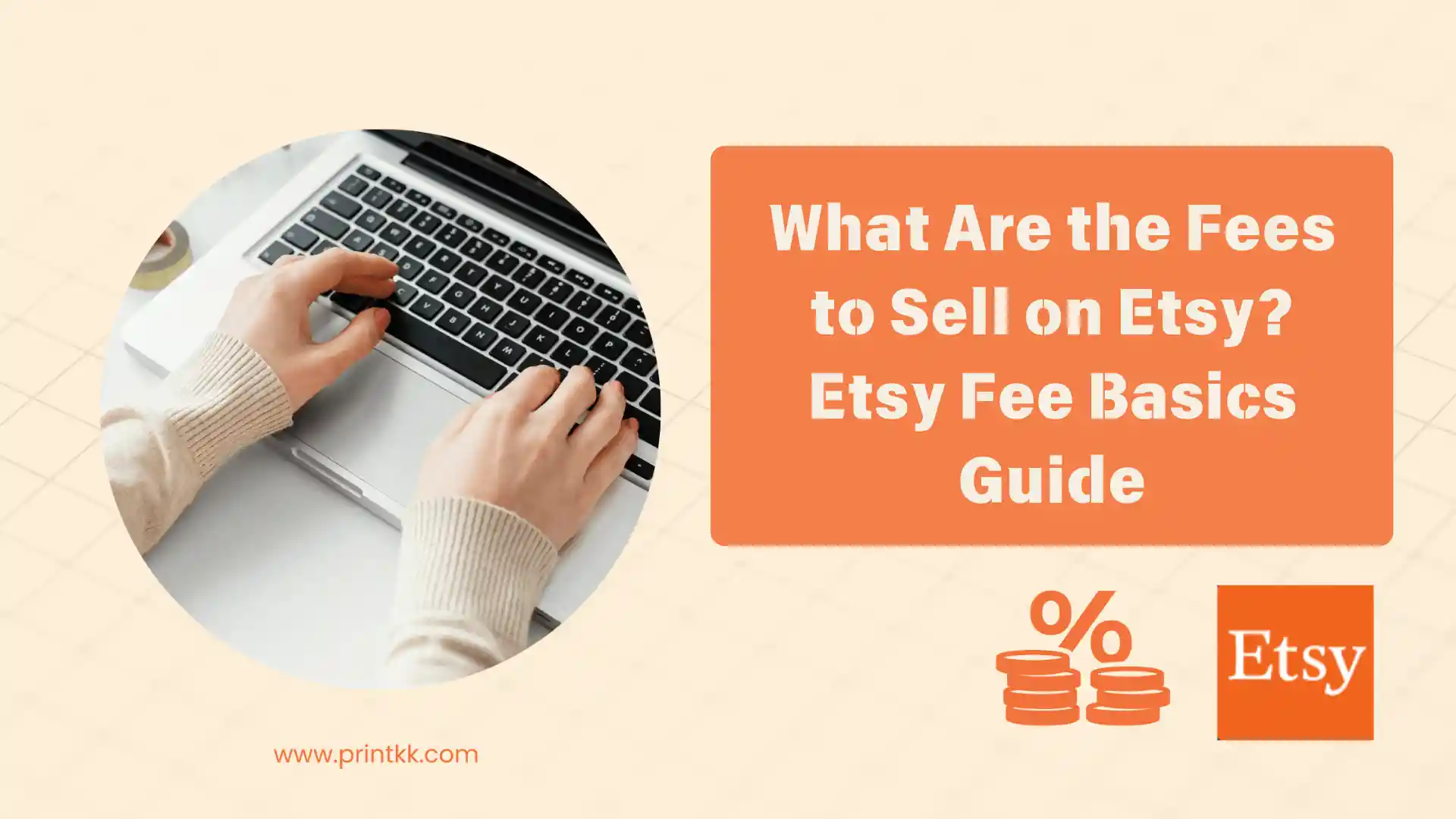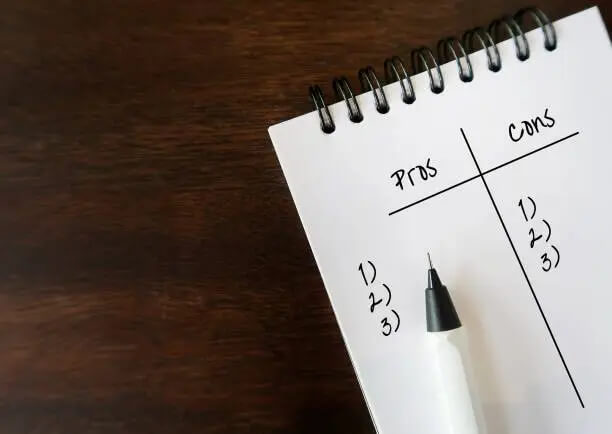
Embarking on an Etsy selling journey brings its own set of challenges, especially when it comes to understanding and managing the fees. Whether you're a budding artist, a crafty entrepreneur, or a small business owner looking to expand your online presence, navigating Etsy's fee structure is key to your success. In this guide, we'll delve into the different types of fees you'll encounter on Etsy, from mandatory to optional, and offer insights on how to calculate and even save on these expenses. Get ready to unlock the secrets of selling on Etsy efficiently!
Different Types of Etsy Selling Fees
Navigating the world of Etsy selling can be a rewarding venture for entrepreneurs and artists alike. However, understanding the fee structure is crucial for anyone looking to establish a successful online store. Etsy, as a leading e-commerce platform, has a specific fee system that sellers should be aware of. Here are the different types of fees you'll encounter when selling on Etsy:
- Listing Fees:
- Etsy charges a nominal fee for each item you list for sale. This is a fixed cost, ensuring your product is visible to potential buyers.
- Transaction Fees:
- Upon making a sale, Etsy takes a percentage of the total transaction amount. This fee includes the cost of the item and the shipping fee set by the seller.
- Payment Processing Fees:
- These are charged for each transaction processed through Etsy Payments, the platform's payment system. The rate varies by country.
- Advertising Fees:
- If you opt to use Etsy's advertising services, like offsite ads, you'll incur additional fees. These are often percentage-based, calculated on the sales made through these ads.
- Subscription Fees (Optional):
- Etsy offers an optional monthly subscription service, Etsy Plus, which provides advanced selling tools and credits for sellers aiming for additional growth and visibility.
- Currency Conversion Fees:
- For sellers transacting in a different currency than their bank account, Etsy charges a currency conversion fee.

Mandatory Etsy Seller Fees
Venturing into Etsy's marketplace brings potential for growth, yet it's crucial for sellers to be cognizant of the mandatory fees integral to the platform. For entrepreneurs, designers, and artists planning to sell on Etsy, a clear understanding of these costs is essential for effective business planning. Let's break down the mandatory fees every Etsy seller encounters:
- Listing Fees:
- A fixed fee applies for each item you list for sale on Etsy. This cost is incurred regardless of whether the item sells.
- Transaction Fees:
- Upon making a sale, a percentage of the total sale price, including shipping, is deducted as a transaction fee.
- Payment Processing Fees:
- Sales through Etsy Payments are subject to processing fees, varying based on the seller's bank country.
- Currency Conversion Fees:
- If your bank's currency differs from your selling currency, each sale will involve a currency conversion fee.
Optional Etsy Fees
Exploring Etsy's marketplace reveals a blend of mandatory and optional fees, the latter offering opportunities for enhanced store performance and visibility. For sellers, these optional fees are strategic choices, not necessities, and can be pivotal in boosting sales and visibility. Here's a look at the optional fees you might consider on Etsy:
- Etsy Ads:
- Allocate a budget for Etsy's advertising platform to increase your listings' visibility, with control over your ad spend.
- Promoted Listings:
- Opting for promoted listings places your products in prominent spots within Etsy's search results, enhancing discoverability.
- Pattern Website:
- Etsy's Pattern service lets you create a custom website, offering a more personalized storefront at a monthly fee.
- Etsy Plus Subscription:
- This monthly subscription provides advanced tools and credits for Etsy services, suitable for sellers aiming for business growth.
- Multi-Quantity Fee:
- Listing multiple quantities of the same item incurs a small fee for each additional item sold after the first.
For sellers on Etsy, understanding these optional fees is crucial. It empowers you to make informed decisions about investments that align with your business goals and budget. Whether you're a solo entrepreneur or a part of a larger organization, these options can help tailor your Etsy strategy for optimal success.
Etsy Fee Examples
Selling on Etsy involves various fees, each playing a role in your business strategy. To give entrepreneurs and designers a clearer picture, let's examine some real-world examples of Etsy fees. These illustrations can help you better understand and anticipate the costs associated with selling on this platform:
- Listing Fee Example:
- For every item listed, Etsy charges $0.20. If you list 50 unique items, your total listing fee will be $10.
- Transaction Fee Example:
- Etsy's transaction fee is 5% of the total sale price. If you sell an item for $100, plus $10 shipping, the transaction fee will be $5.50 (5% of $110).
- Payment Processing Fee Example:
- This fee varies by country. For instance, in the US, it's 3% + $0.25 per transaction. So, for a $100 sale, the fee would be $3.25.
- Etsy Ads Example:
- If you set a daily budget of $5 for Etsy Ads and run it for 30 days, your total ad spend will be $150 for that month.
- Pattern Website Example:
- Opting for Etsy's Pattern website incurs a monthly fee of $15, separate from your Etsy store fees.
- Etsy Plus Subscription Example:
- Etsy Plus costs $10 per month, providing additional tools and credits for enhanced store functionality.
These examples show how various Etsy fees can add up, depending on your selling activities and choices. By understanding these costs, you can more effectively plan your budget and pricing strategy, ensuring your venture on Etsy is both profitable and enjoyable.
How Do You Pay Your Etsy Fees?
Understanding Etsy's fee payment system is integral for a smooth store management experience. This setup is especially beneficial for those new to the platform, making one of the more intricate aspects of online selling more manageable.
Etsy combines all your due fees into a single monthly statement. This includes listing fees, transaction fees, any subscription fees if you're subscribed to Etsy Plus, and charges from Etsy's advertising services. Approximately in the middle of each month, Etsy issues a statement that details all the fees incurred in the previous month, which you can access in the 'Finance' section of your Etsy account.
When it comes time to settle these fees, Etsy provides several options. The platform automatically deducts your fees from your sales proceeds. If your sales cover the fees, they are paid off in this manner. If not, you can pay the remaining balance using a registered credit card, debit card, or PayPal account. Etsy also allows you to make manual payments at any time before the auto-deduct date each month, giving you greater control over your finances. This system is designed to let you focus more on the creative and sales aspects of your business, with less worry about the complexities of fee payments.
How to Calculate Your Etsy Fees?
Calculating your Etsy fees is a vital step towards ensuring profitability and success on the platform. It may seem daunting at first, but with a clear understanding of the fee structure, it becomes a straightforward process. Etsy's main fees include the listing fee, transaction fee, and payment processing fee. Each of these plays a different role in your overall costs.
Start by considering the listing fee – a fixed charge for each item you list on Etsy. This cost is relatively small but can add up if you have a large inventory. Next, factor in the transaction fee, which is a percentage of the total sale price, including shipping. This fee varies based on the sale amount, so it's proportional to your pricing strategy. Finally, the payment processing fee depends on the country of your bank. It's a fixed percentage plus a small flat fee per transaction. To calculate your total fees, sum up these individual costs for each item sold.
For a more detailed calculation, consider using Etsy's fee calculator tools available online or integrate your account with accounting software that offers Etsy compatibility. These tools automatically calculate the fees based on your sales data, providing a clear view of your expenses. Remember, keeping a keen eye on these costs will help you price your products wisely, ensuring that your Etsy journey is not only creatively fulfilling but also financially rewarding.
How to Save on Your Etsy Fees?
Saving on Etsy fees is like finding hidden treasures in your business journey. For entrepreneurs and artists looking to maximize their profits, reducing these fees is a clever strategy. The key is understanding which fees are flexible and how you can influence them. Start with listing fees - while they are fixed per item, you can optimize by listing products with higher profit margins or longer shelf life. This approach ensures that each listing fee contributes maximally to your overall revenue.
Another area to target is transaction fees, which are a percentage of your sales. Bundling products or offering sets can increase your average order value, spreading the transaction fee over a larger sale amount. Additionally, keeping an eye on shipping costs is crucial. Overestimating shipping can lead to higher transaction fees, so accurate shipping pricing is essential. Lastly, consider the benefits of Etsy's advertising and subscription services. While these are optional, weigh their costs against the potential increase in sales they could bring. Sometimes, investing a little in marketing can bring a higher return, outweighing the additional fees. Remember, smart selling on Etsy is about balancing costs with benefits, ensuring that each decision contributes to your store's profitability and growth.
Reviews about Etsy Fees
Navigating Etsy's fee structure is a nuanced task, and user reviews can provide a range of perspectives. While many Etsy sellers acknowledge the necessity of fees within the e-commerce ecosystem and value the platform's ability to foster business growth, it's important to consider each review with a discerning eye. Assessing costs against benefits, sellers share a spectrum of experiences. We encourage you to read through these reviews with a critical mindset to form a well-rounded understanding of Etsy's fee structure and its impact on your business.
Here's a snapshot of what Etsy sellers are saying about fees:
- @wephotogal – "If you have your own site, traffic may be challenging, Etsy has that traffic built in. I have my own site and was also linking my listings to it but it got to be kind of cumbersome if I had to make changes and then having to list on two platforms - I wanted it to be streamlined and easy for both me and the customer. Also, my website initially was say around $20 mo. but if you want to enable POD and selling, the cost to do so adds up - so around $36 month for that website to have a selling feature. And then if you do make a sale, the site gets their fee for processing the transaction, and PayPal takes their fee as well. There will always be fees, but if you have a website, count on paying for that site monthly to sell AND fees."
- @pamelamctaggart6457 – "This was my original plan to start an Etsy. I have been selling custom items to gym trainers. Now I'm interested in establishing my own Etsy."
- @indarknessiburn– "I started Etsy ads selling mostly shirts at 10 dollars a day. It's been a couple days since I started but I only spent about 2-3 dollars each day since I started. I am advertising 35 out of my 115 listings. "
- @tomdanks3427 – "Etsy is still one of the most affordable selling platforms out there."
- @GreerTownsley – “I've been selling for a month and have been confused where all the fees came from.”

Pros of Selling on Etsy
Exploring the advantages of selling on Etsy reveals why it's a favored platform for diverse sellers. Here's an insight into the benefits of utilizing Etsy for your print on demand business:
- Built-in Audience: Etsy's vast and loyal customer base means immediate access to potential buyers.
- Niche Market Appeal: Perfect for unique, handmade, and custom items, catering to a specific market.
- SEO Benefits: Etsy's platform is optimized for search engines, helping your products get found.
- User-Friendly Interface: Easy-to-use tools for listing, managing, and tracking sales.
- Community and Support: Strong seller community with forums and support for guidance and tips.
- Global Reach: Etsy makes international selling more accessible, expanding your market.
- Personalized Storefront: Customize your shop's look to reflect your brand and attract your target audience.
- Marketing Tools: Integrated marketing tools for promotions, sales, and advertising on the platform.
- Trust and Credibility: Etsy's reputation adds credibility to your store and products.
- Analytics and Insights: Detailed analytics to understand customer behavior and optimize sales strategies.
These benefits highlight Etsy as a vibrant marketplace that supports creative entrepreneurs, offering tools and a community to help businesses flourish.
Cons of Selling on Etsy
While Etsy presents numerous benefits for sellers, it's equally important to be aware of its potential drawbacks. Here's a look at some challenges you might face when selling on Etsy:
- Competition: The platform is highly competitive, making it challenging for new sellers to stand out.
- Limited Customization: Compared to owning a website, customization options for your shop are limited.
- No Direct Customer Relationships: The platform restricts direct communication with customers, limiting relationship-building opportunities and repeat business strategies.
- Intellectual Property Concerns: There's a risk of design theft or copycat products, which can be difficult to police on a large platform like Etsy.
How to Sell on Etsy
Selling on Etsy can be a rewarding venture, especially for creative entrepreneurs. Here's a step-by-step guide to get you started:
- Set Up Your Etsy Shop: Begin by creating an Etsy account and setting up your shop. Choose a memorable shop name that reflects your brand.
- Understand Etsy's Fee Structure: Familiarize yourself with Etsy's various fees, including listing fees, transaction fees, and payment processing fees.
- List Your Products: Add listings to your shop. Include high-quality photos, detailed descriptions, and appropriate tags to improve searchability.
- Price Your Items Wisely: Factor in all costs, including materials, labor, Etsy fees, and shipping. Set competitive prices without undercutting your profit margin.
- Optimize for Etsy SEO: Use relevant keywords in your product titles and descriptions. This helps potential buyers find your products through Etsy search.
- Promote Your Shop: Utilize Etsy's advertising options and leverage social media platforms to drive traffic to your shop.
- Engage with Your Customers: Provide excellent customer service. Respond promptly to queries and encourage buyers to leave reviews.
- Manage Your Shop Finances: Keep track of your expenses and revenue. Consider using accounting software to simplify financial management.
- Stay Compliant: Ensure you adhere to Etsy's seller policies and legal requirements, including taxes and intellectual property rights.
- Continuously Improve: Regularly analyze your shop's performance. Experiment with new strategies, product lines, or marketing techniques to grow your business.
Remember, success on Etsy not only depends on your unique products but also on how effectively you manage and promote your shop.
Conclusion
In conclusion, navigating the realm of Etsy selling comes with its unique set of challenges and opportunities. Understanding Etsy's fee structure is pivotal for any seller looking to make the most out of this vibrant marketplace. While fees such as listing, transaction, and payment processing are part and parcel of the selling process, they are counterbalanced by the platform's vast customer reach and the ease of setting up shop. Etsy provides a robust platform for creative entrepreneurs to showcase their products to a global audience, making it an attractive option despite the associated costs.
Moreover, savvy sellers can leverage Etsy's rich features and customer base to build a thriving business. By optimizing listings for Etsy's search engine, engaging effectively with customers, and employing strategic pricing and marketing, sellers can offset the costs associated with Etsy's fees. In essence, while fees are an inevitable aspect of selling on Etsy, they don't diminish the platform's potential as a lucrative and fulfilling avenue for artisans, crafters, and small business owners worldwide.
FAQs
Is Etsy a good place for you to sell?
Etsy is ideal for creative entrepreneurs and artists seeking a vast, engaged audience. Its user-friendly platform and diverse community make it an excellent choice for unique, handmade, or vintage items. However, consider Etsy's fees and competition to ensure it aligns with your business model and goals.
Where to see your Fees on Etsy?
To view your fees on Etsy, navigate to the 'Shop Manager' section. Under 'Finances,' select 'Payment Account,' where you'll find a detailed breakdown of all charges, including listing, transaction, and payment processing fees, providing a clear and transparent view of your financial transactions on Etsy.
How much does Etsy take per sale?
Etsy charges a 5% transaction fee on the sale price (including the shipping cost set by you). Additionally, if you accept payments through Etsy Payments, there's a payment processing fee that varies by country. For example, in the US, it's 3% + $0.25 per transaction. These fees are automatically deducted from your sale proceeds.
How do I avoid seller fees on Etsy?
Completely avoiding seller fees on Etsy isn't possible, as they're integral to the platform's business model. However, you can minimize costs by optimizing your listings for Etsy's SEO, avoiding unnecessary listing renewals, and carefully managing your advertising budget to ensure efficient spending and maximum returns.










 Global Shipping
Global Shipping


 Made in USA
Made in USA


























